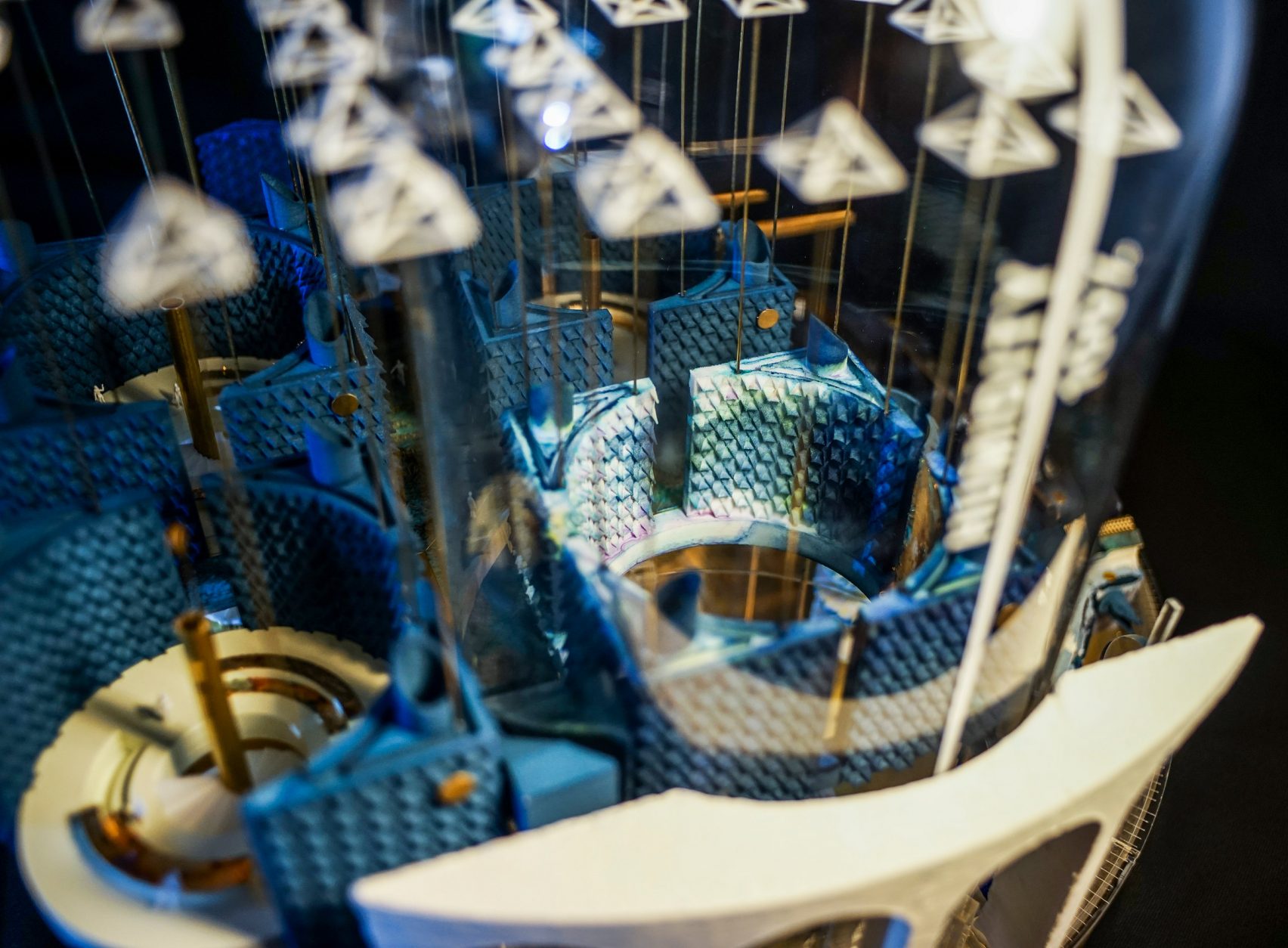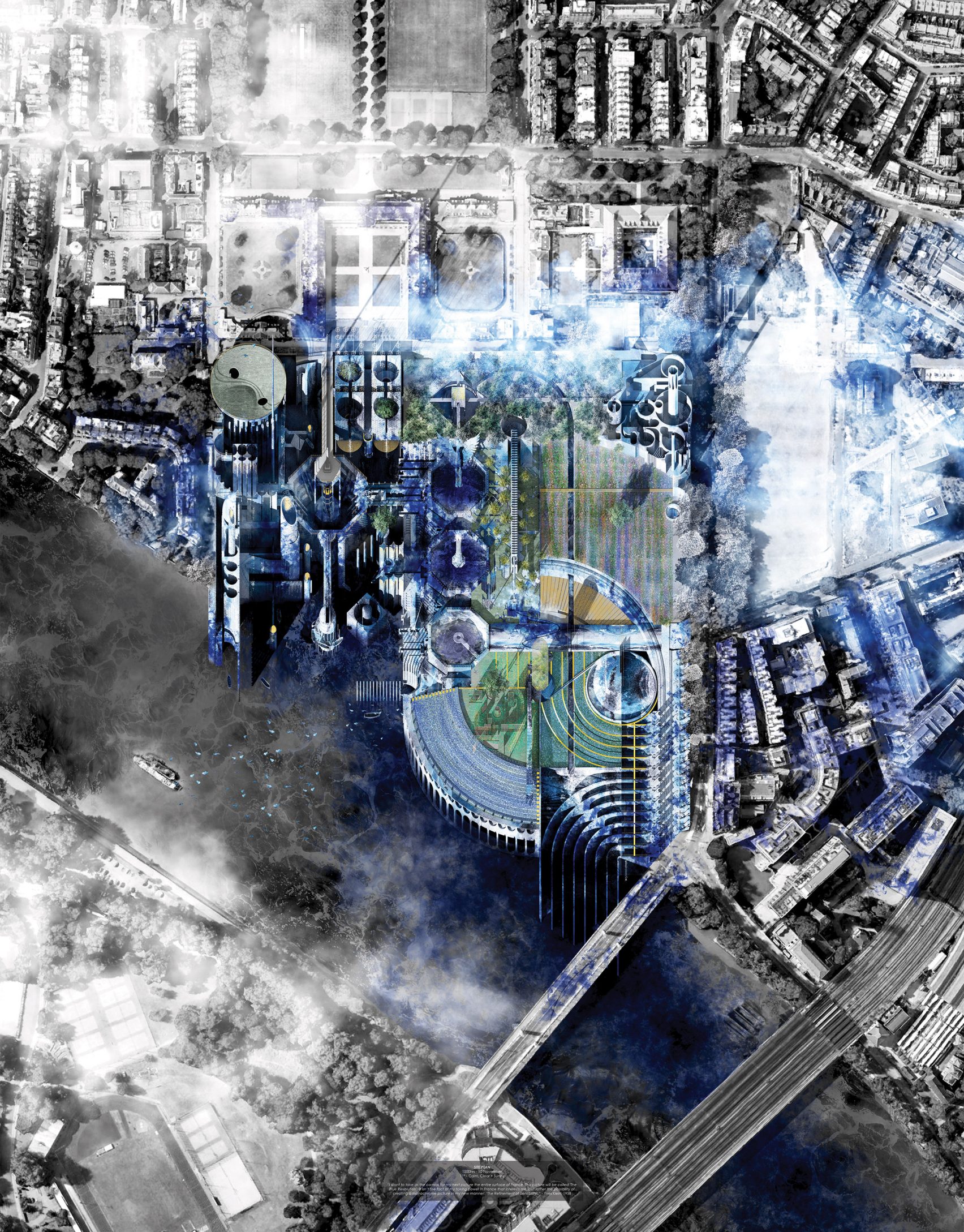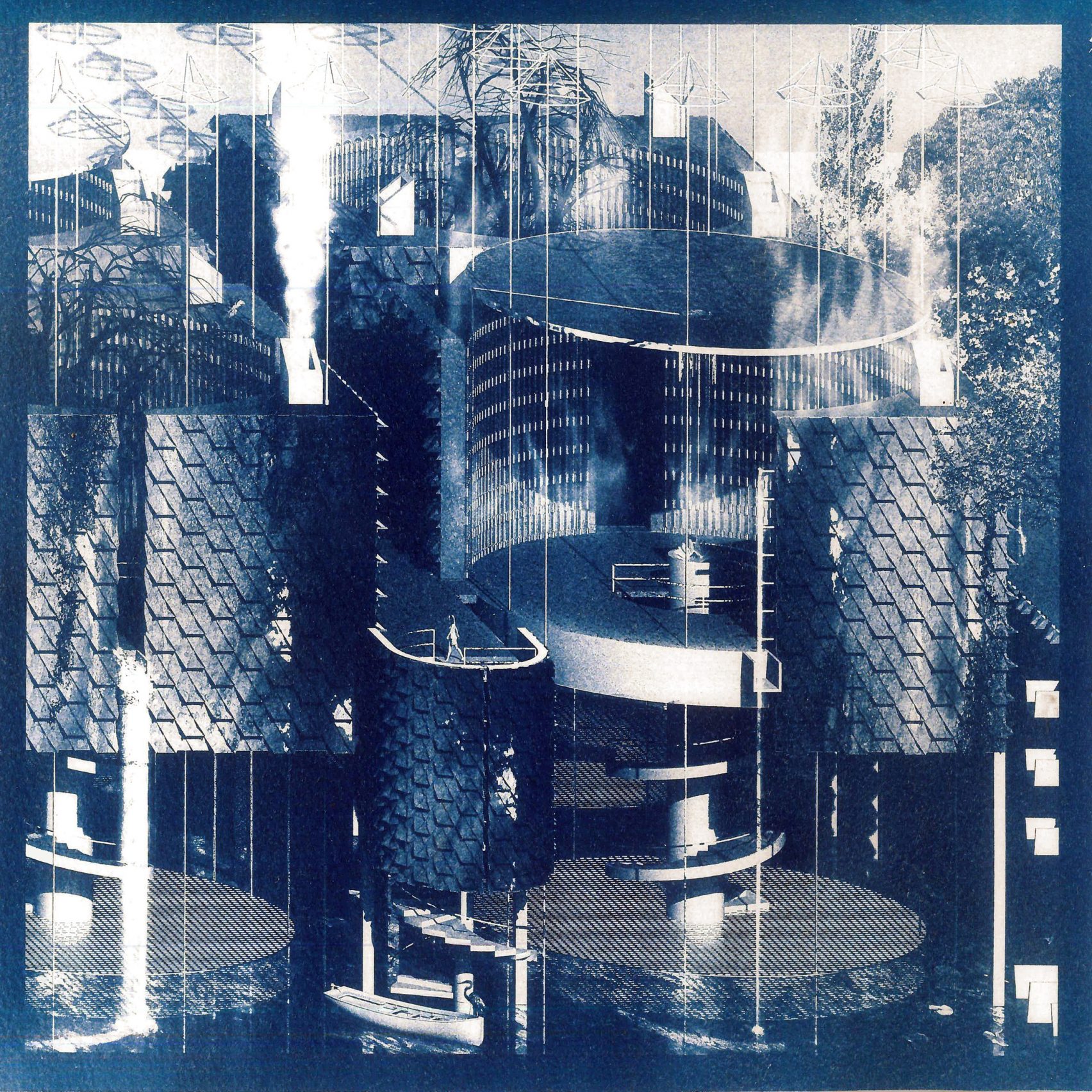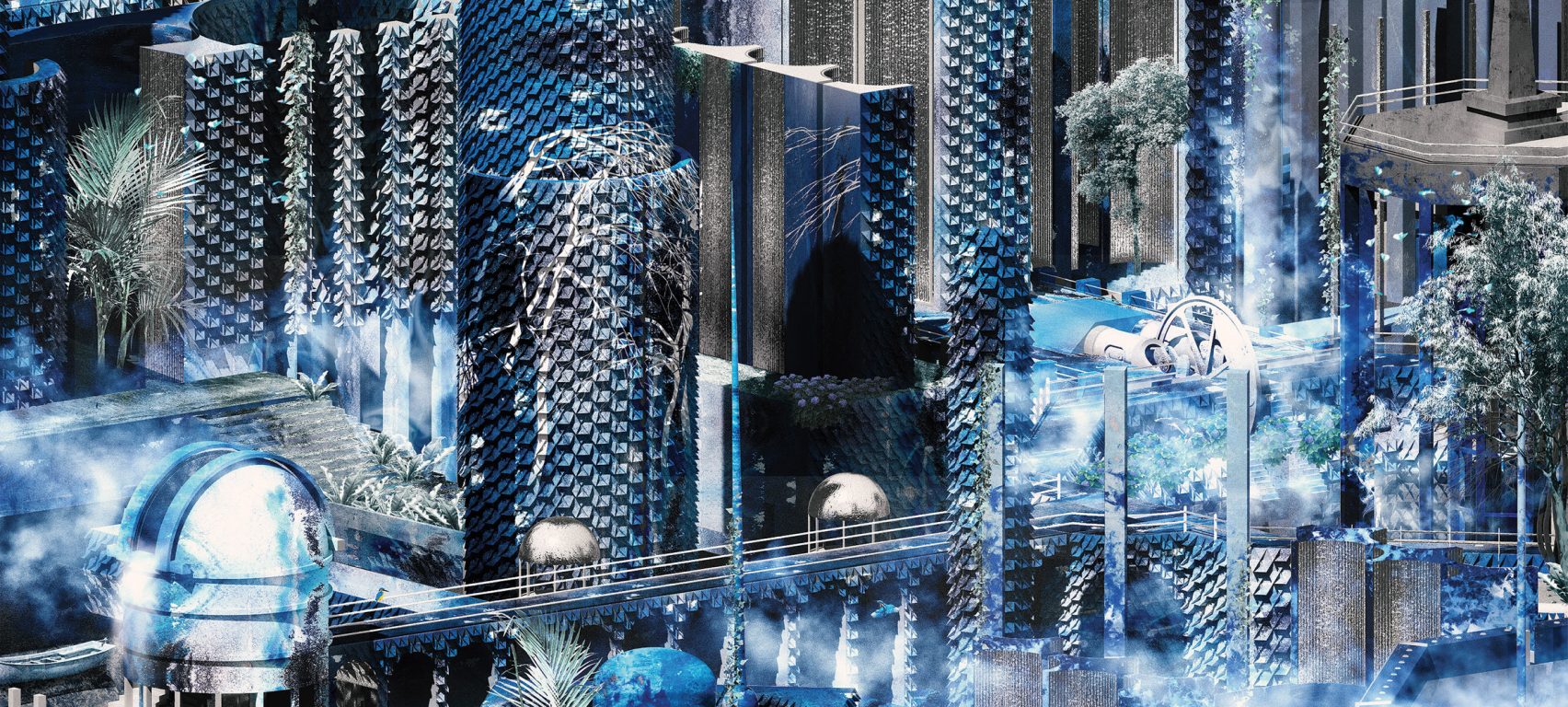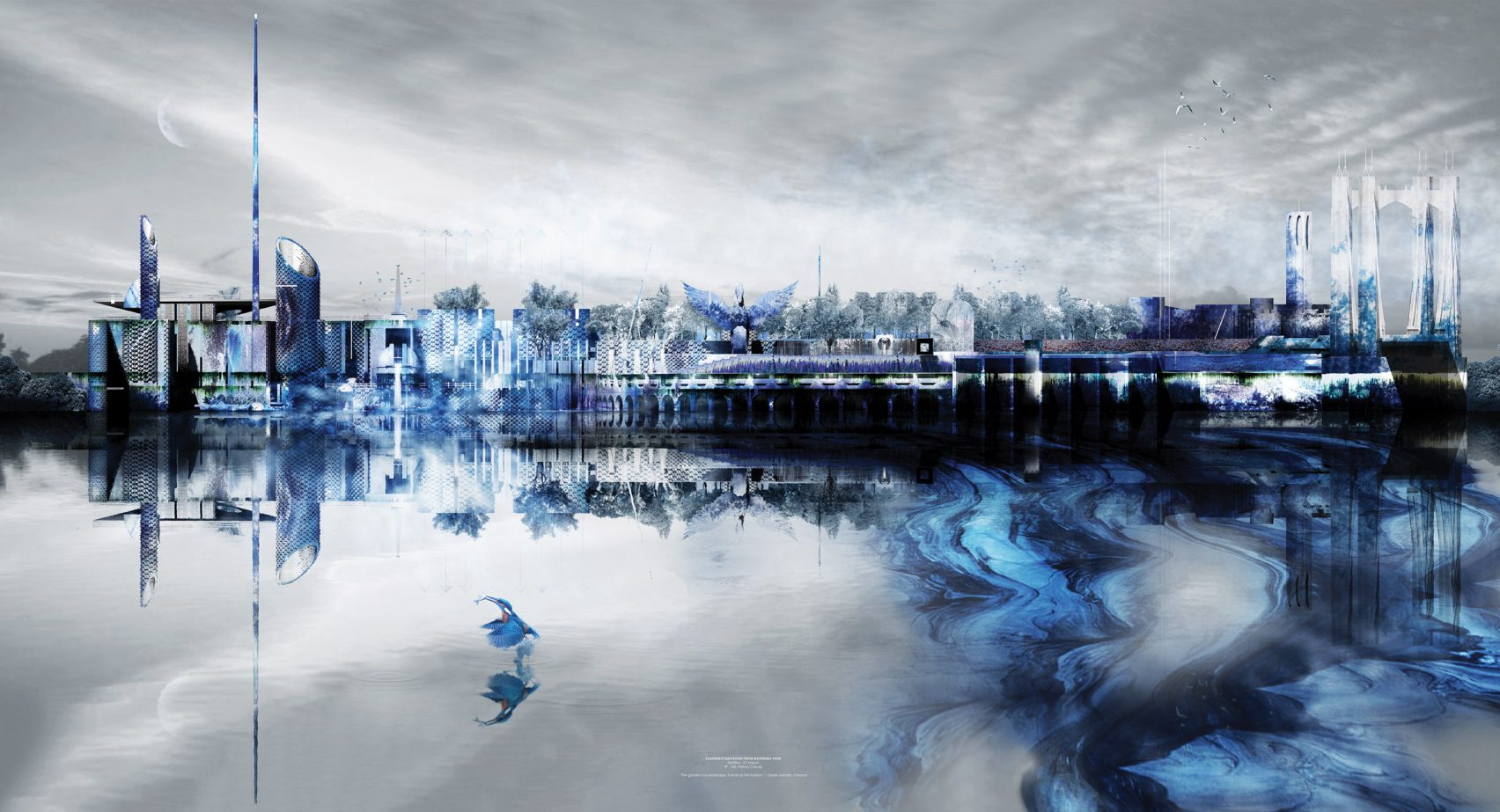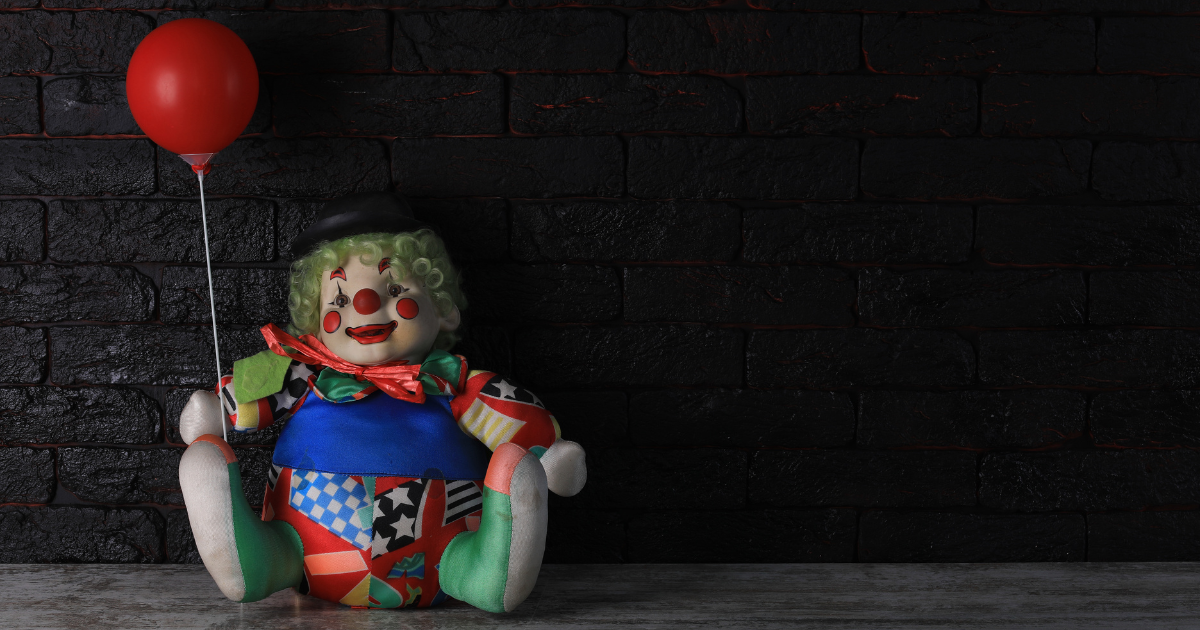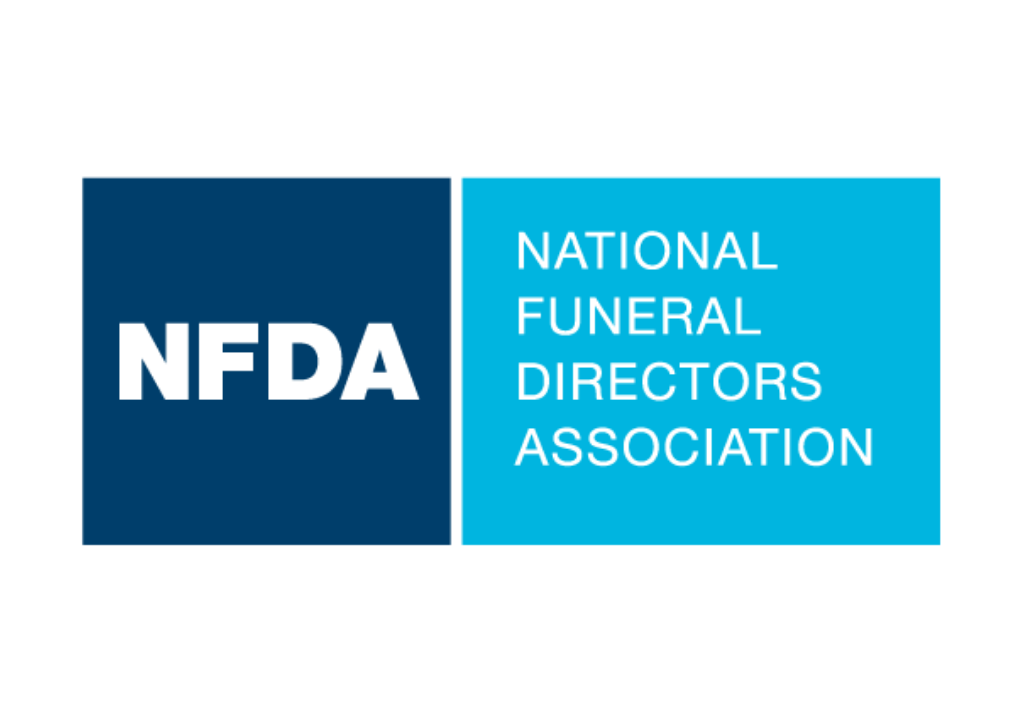This Radical Proposal Uses Alkaline Hydrolysis Water to Stain London Blue
Western culture tends to have a distant relationship with death and mortality and Sam Coulton, an architecture masters student at Bartlett School of Architecture, wants to usher in a new era of death-consciousness for London, England. Coulton has designed a concept future for the city in which mortality is a visually unvoidable idea in daily life that we could see in the rain, in the plants, on the buildings, and even in our poo.
Just 150 years ago, we were caring for our own dead: washing them, dressing them, and resting our dead in the parlor of our personal homes for visitation before digging graves using shovels and burying family in parks near the center of town. This is an incredibly intimate relationship to have with our dead and a relationship that became increasingly distant following the civil war. The war catalyzed the popularization of embalming, the traditional funeral home, and, ultimately, the Big Death industry we know today.
Coulton believes that a return to a death-and-mortality-conscious culture would drive awareness for important environmental and social issues of today and inspire action. He explains that lack of mortal sensibility is driving “extreme climate uncertainty, population growth and political instability due to impulsive decision making with little regard for the past or future Londoner.”
Coulton’s concept design for London utilizes Alkile Hydrolysis paired with an environmentally-neutral dye to gradually stain the entire city of London blue.
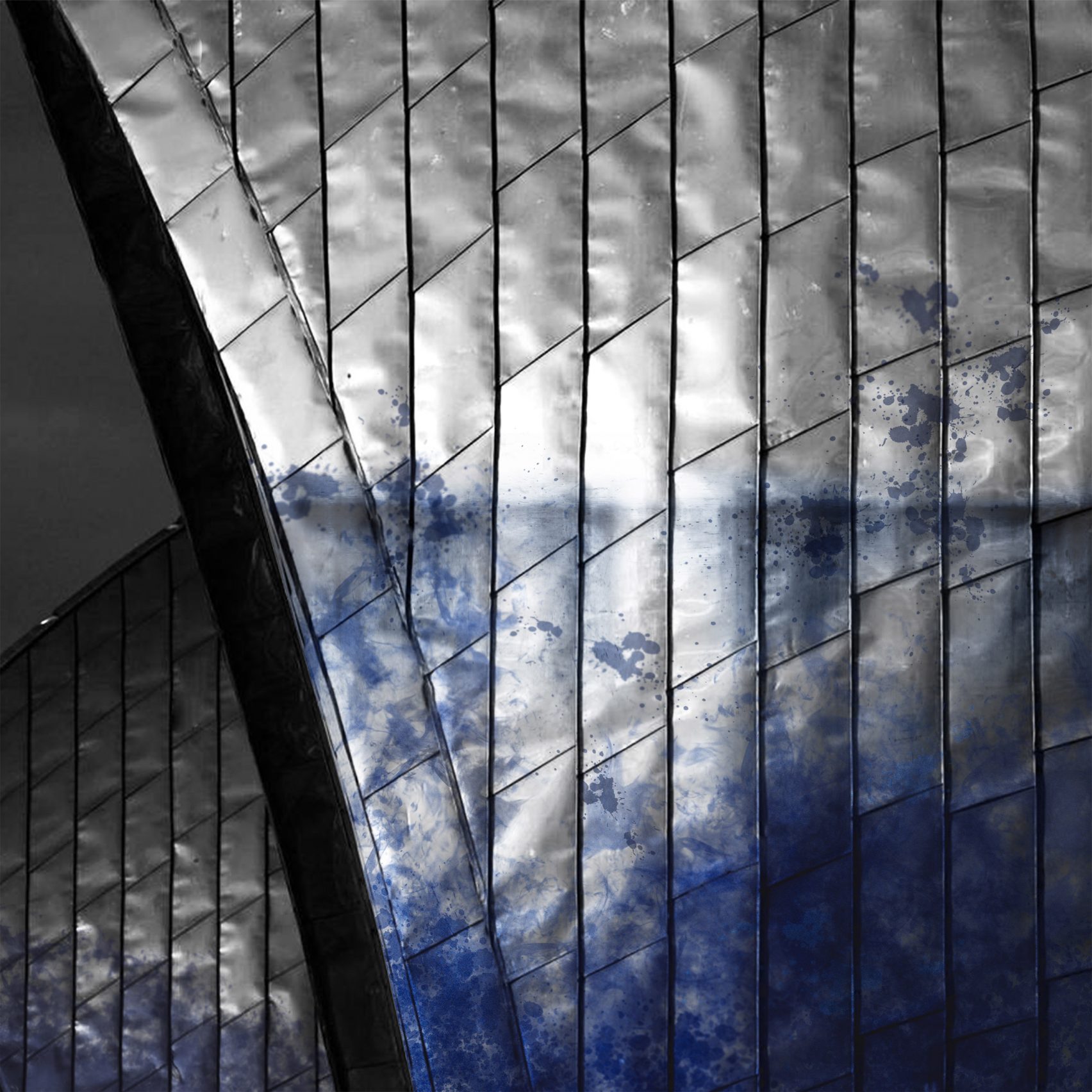
“Prussian blue is an environmentally neutral dye, and can even be prescribed as a treatment to the exposure of radiation. It’s used to treat thallium poisoning or radioactive cesium poisoning…,” Dezeen explains.
In his proposal called London Physic Gardens: A New London Necropolis Coulton lays out a plan to transform London’s Physic Gardens into a crematory/cemetery/memorial garden experience. Bodies arriving at the concept London Physic Gardens will be wrapped in a Prussian blue-dye shroud before entering the Alkaline Hydrolysis chamber. Inside the Aquamation chamber, the Prussian blue pigment will leach into the water which is then drained and used to nourish the gardens. Coulton says that the liquid resulting from Alkaline Hydrolysis contains amino acids, sugars, and salts and can be used to nurture plants.
“This drained blue water would also leach from the soil into the Thames, dying the river blue. It would also enter the water cycle, raining down on the city and eventually staining its buildings blue, too,” Dezeen explains. And if the dye leaches into the drinking water… it will even dye our poop blue…
“Britain as a whole is particularly Victorian in its attitude to death and to public space,” Coulton told Dezeen. “[I hope] that the introduction of this new kind of abstract necropolis would shock the living Londoner into engaging environmentally and socially.”
What do you think of dying a city blue as a reminder of mortality in order to inspire social activism? Tell us in the comments!

